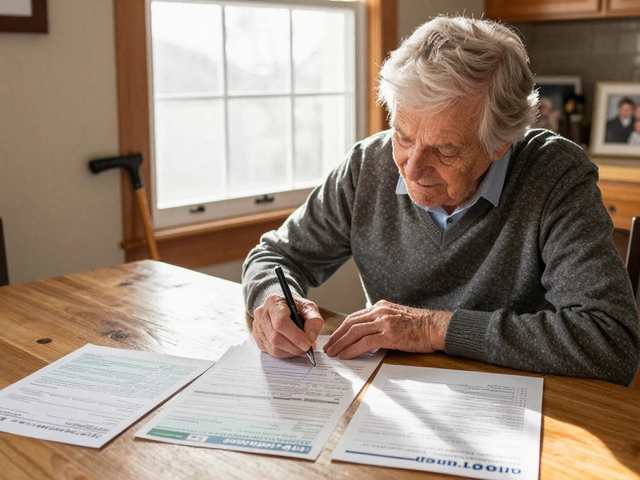If you’ve ever spent ten minutes browsing New York rental listings, you know one thing: it’s a jungle out there. People post listings at 9 a.m., and by noon—poof—they’re already gone. Brokers call you back about a dream place, but somehow there’s always one more fee. In this city, a decent flat is basically gold dust.
Before you start, know your budget—like, really know it. Shoot for spending no more than a third of your monthly income on rent. Some landlords want to see proof you make forty times the monthly rent every year (yep, it can feel impossible). Don’t forget to factor in broker fees, which can be as much as 15% of the yearly rent, though sometimes you’ll get lucky with a no-fee listing.
Location matters just as much as the apartment itself. Do you want to be near the subway, or is peace and quiet a bigger deal? Take at least one walk around any area you’re considering. One guy ended up loving the bodega on his corner more than his view of the skyline. It’s the little things that make a flat feel right.
- What Makes NY Rentals Different
- Setting Your Budget and Expectations
- Hunting for the Right Flat
- The Application and Move-In Process
What Makes NY Rentals Different
First off, rent a flat in New York and you’ll notice right away it’s not like looking for a place anywhere else. The demand is insane—people jump on listings sometimes within hours. Open houses often mean cramming in with 20 other wannabe tenants just to get a peek at a studio. Oh, and if you want something affordable and half-decent, expect a serious bidding war in popular neighborhoods.
Landlords here play by their own rules. Most want you to show you earn at least 40 times the monthly rent in yearly income, so for a $2,500 flat, you’ll need to prove $100,000 a year on paper. If you’re a student or don’t meet the income cutoff, they’ll ask for a guarantor—usually someone with a U.S. address and, yep, a much higher income.
Then there’s the NY apartments broker scene. Many places are only shown by brokers, and they tack on a fee that can hit 12-15% of your annual rent. No-fee listings are around, but they go fast. Also, there’s a weird thing called "pre-war" and "post-war" buildings: pre-war usually means classic but quirky, post-war is more boxy and practical—decide which vibe suits you before you tour.
- Application fees are capped at $20 per applicant, but security deposits are still usually one month’s rent.
- Paperwork is a big deal—have copies of your tax returns, bank statements, and photo ID ready to roll.
- New York has rent-stabilized apartments, but these are rare and snatched up quickly.
If you want to see just how crazy things get, check out these 2024 downtown stats:
| Neighborhood | Average Studio Rent | Applicants per Flat |
|---|---|---|
| East Village | $3,400 | 12 |
| Williamsburg | $3,800 | 15 |
| Harlem | $2,400 | 9 |
So, the next time you see "renting process" in New York mentioned online, know it’s not just paperwork—it’s a full-on sprint. The more you know about these quirks, the better shot you have at landing a solid place.
Setting Your Budget and Expectations
Before you throw yourself into the madness of renting a flat in NY, let’s get real about your budget. In New York, the golden rule is to keep rent at or below 30% of your gross income. But here’s the kicker—most landlords look for tenants whose yearly income is at least 40 times the monthly rent. That’s not a typo. So, if the rent is $2,500 a month, you’ll need to prove you make $100,000 a year. Otherwise, you’re probably going to need a guarantor—usually someone who earns 80-100 times the rent.
You’ll also have to think about all those extra costs on top of the rent. Common ones include:
- Broker’s fee: Usually 12-15% of NY apartments annual rent, unless it’s a no-fee place.
- Security deposit: Legally capped at one month’s rent since 2019.
- Application fees: Capped by law at $20, but some will also ask for credit check fees.
- Moving costs: Truck rentals, movers, or lots of pizza for your friends.
Here’s a quick look at how all these numbers can add up if you’re moving into a $2,500/month flat:
| Expense | Typical Cost |
|---|---|
| First month rent | $2,500 |
| Security deposit | $2,500 |
| Broker’s fee (12%) | $3,600 |
| Application fees | $20 |
| Moving costs | $500+ |
| Total upfront | $9,120+ |
Don’t forget about your expectations, too. You’re probably not going to get a dishwasher, laundry in-unit, and a classic Manhattan skyline view all for $2,000 a month. Be flexible. One way to save: look north of 110th Street in Manhattan, into Queens, or anywhere in Brooklyn that’s a little farther out. Housing stock can get bigger, newer, and cheaper the further you get from central Manhattan.
Need to share with roommates? Totally normal here, and it can save major cash. But set some ground rules early, and agree on how you’ll split rent and bills before making it official. Also, don’t forget to budget for monthly bills—electric, internet, gas, and maybe even an extra MetroCard if you’re commuting more.
Set your budget and your wish list before even clicking on another NY apartments listing. It’ll save you from heartbreak, wasted time, and overpriced broker calls down the road.

Hunting for the Right Flat
In New York, searching for a flat for rent is almost a full-time job. The market moves fast, so you need a plan and a few tricks up your sleeve. Here’s how to make your hunt count instead of wearing you out.
First, start online—sites like StreetEasy, Zillow, and Apartments.com list most available places in real time. Always filter by your budget and the neighborhoods you actually want. Listings marked as “no fee” mean you won’t pay the broker, but those go fast.
If you have the budget for it, working with a broker can help you get into places you wouldn’t find on your own. But make sure you check their reviews, and never pay money upfront. Scammers love desperate renters in New York, and if a deal seems too good to be true, it probably is.
- Set up alerts on apartment websites so you find out about new listings the second they pop up.
- Prepare a "renter packet" ahead of time—think: pay stubs, photo ID, bank statements. Most landlords ask for this the moment you say you’re interested.
- If you’re okay with less privacy, look for “flex” apartments—these are larger spaces split into smaller ones, and usually cost less per person.
- Consider roommates if you want more space or a prime spot. The majority of people under 35 in NY don’t rent alone.
If you can, try to view flats in person, even if only for five minutes. Apartments can look totally different from the pictures. Check if the building has a working elevator (if it says “walk-up,” get ready for stairs), test the water pressure, and ask about heat and hot water—they’re both legally required, but not always handled well.
| Fact | Number |
|---|---|
| Average days a rental stays on market (2024) | 17 days |
| Approximate broker’s fee in Manhattan | 12-15% yearly rent |
| Percentage of renters using online tools | Over 80% |
Don’t waste time waiting for the perfect NY apartment. If you see something great, act fast and have your paperwork ready. That’s what gets you the keys in this city.
The Application and Move-In Process
The paper chase is real when you want to rent a flat in NY. Landlords here love paperwork, so get your stuff together before you even visit your first apartment. This isn’t the moment to hunt down your pay stubs at the last minute—having everything ready can put you ahead of the crowd, which is no joke in this market.
Here’s a quick list of things you’ll almost definitely need:
- Government-issued photo ID (driver’s license or passport)
- Letter of employment with your salary spelled out
- Pay stubs—usually the last two or three
- Bank statements (last two months is common)
- Tax returns—sometimes just the most recent, sometimes two years
- Contact for previous landlords (for references)
- Credit report (though most landlords do their own check anyway)
If your income falls short of that “40x the rent” rule, you’ll likely need a guarantor—someone (usually a family member) who agrees in writing to cover your rent if you can’t pay. Just wait: the city often requires your guarantor to make 80x the monthly rent, and they probably need to be U.S.-based. If you don't have one, some companies will do it for a fee.
After your application is in, things move fast. If you get a yes, be ready to sign the lease that same day—seriously, people have lost out by waiting just a few hours. When you sign, expect the upfront costs: first month’s rent, one month’s security deposit, and if there’s a broker, their fee is due too. No, Venmo probably won’t cut it—bring checks or plan for a wire transfer.
More buildings now use online portals for applications and payments, but old-school landlords might still want paper forms. And always, always tour the actual flat before signing. If someone tries to rush you or asks for money before you see the place, that’s a red flag.
| NY Rental Upfront Cost Breakdown | Typical Amount |
|---|---|
| First Month’s Rent | 100% of monthly rent |
| Security Deposit | 1 month rent max (by law) |
| Broker Fee | 0% to 15% of annual rent |
| Application Fee | Up to $20 (legal max) |
Finally, check if the place comes with basic things like kitchen appliances or window AC units—best not to assume. Update your address, set up utilities, and schedule movers as soon as your lease is locked. That’s it—you’re officially in the NY game!





